There are so many great ways to preserve fresh seasonal produce from your garden or the farmers’ markets (or your community grocer). Let’s have a look at 10 popular methods to preserve fresh seasonal produce for the Winter pantry, for using in cold-weather cooking.
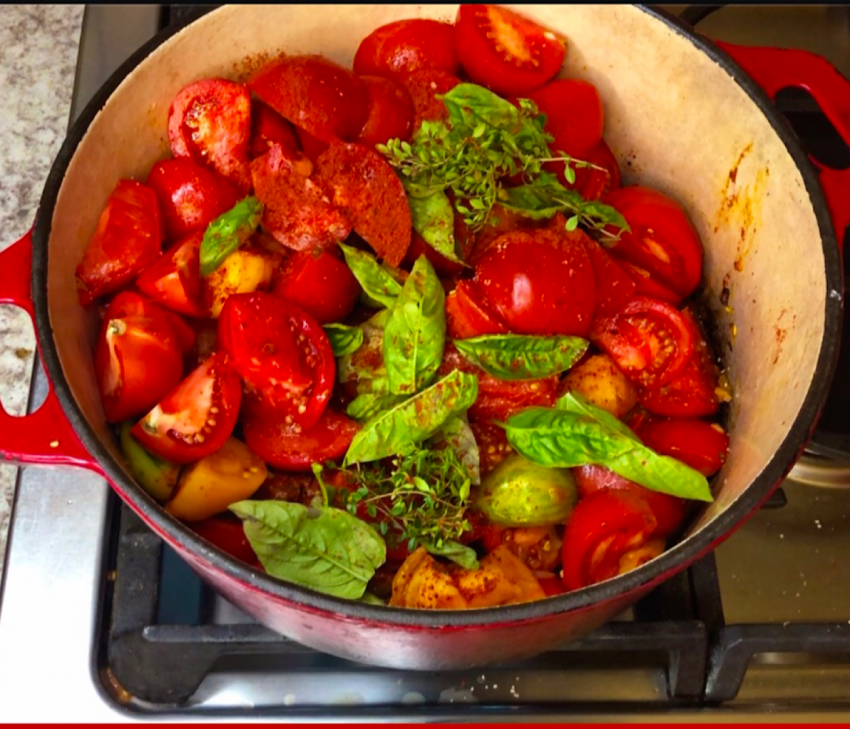
Jump to: Freezing | Dehydrating | Pickling | Canning | Salting | Root Celler | Drink Syrups | Fermenting | Air drying | Compound Butters
This post may contain affiliate links, and you can read our disclosure information here–
1. Freezing
If your garden is producing well and you need a quick and easy way to preserve fresh seasonal produce, freezing is still the #1 preservation method in terms of ease. You can freeze most fresh vegetables and fruits just fine with no cooking required!
This freezing chart from Everest is a great cheat sheet to keep handy:
Although some foods can be frozen whole, for the best results, it’s often handy to imitate the method also used for the frozen veg you’d buy at the supermarket.
Here’s how you do it:
- Check whether the particular food you want to freeze should be blanched beforehand. With some produce, a quick blanch really helps to keep the quality up (and it preserves the color).
- Cut your produce into pieces that will fit the end uses you have in mind
- Place the pieces on an oven tray lined with parchment paper, making sure the edges don’t touch, and pop the tray into the freezer for at least 3 hours. This is referred to as flash freezing and ensures you won’t end up with one big frozen block that’s impossible to divide into portions.
- Transfer to labeled freezer bags. Now your fruit or vegetables will last for months and you can easily grab them whenever you need them for a recipe!
Of course, you can also prepare your produce into a ready-made meal before freezing. Or prepare large batches of a meal and then freeze.
What’s better than coming home after a long day and realizing you have some homemade veggie soup in the freezer?! Just thaw, reheat and serve with bread slathered in herb butter (scroll down to #10 on the list to find out how to make that soup).
Or what about freezing individual servings of rich red Mediterranean tomato sauce, one of my personal favorite ways to preserve a big tomato harvest? Just boil some pasta while you thaw and reheat the sauce and voilà, a wholesome but super-quick weeknight meal.
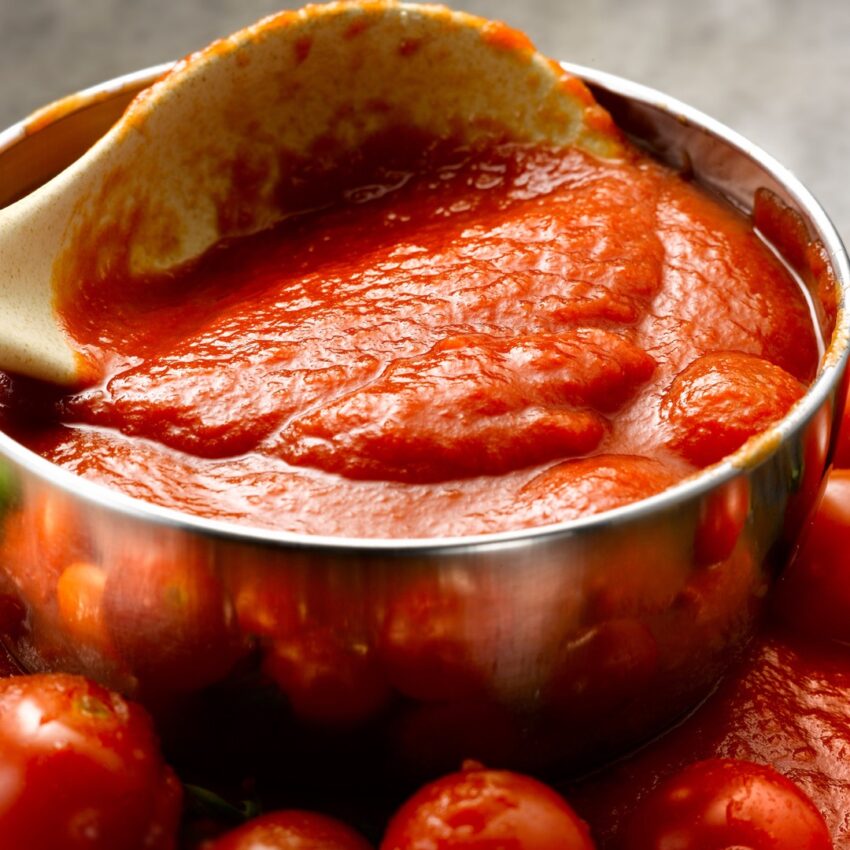
2. Preserve Fresh Seasonal Produce by Dehydrating
There are so many tasty ways to preserve fresh fruit and vegetables by dehydrating them! I don’t know about you, but I definitely don’t mind not having to buy sundried tomatoes ever again – homemade ones are tastier and much, much cheaper.
Or what about veggie chips, which are also wildly expensive in-store but very easy to make at home? Or dried chile pepper varieties like chipotles and anchos?

If you’d like to dehydrate your harvest, the most convenient option would be to add a dehydrator (this is my favorite dehydrator) to your kitchen arsenal. It’s a great set-and-forget option to dry any food you can imagine, and if you buy a used one, it won’t break the bank either.
Oven drying works too, but it’s significantly more difficult to control the process and foods don’t always come out the way you planned. If you live in a warm and dry climate, you can even dry foods outside.
Here are a few of my tried-and-tested foods to dehydrate:
- Sundried tomatoes: a no-brainer, really. If you’re making the frozen pasta sauce mentioned above, definitely throw in some of these for a little extra umph.
- Dried beet chips: these don’t last for more than an afternoon in my house before mysteriously disappearing.
- Dried cucumber chips: add salt and vinegar to take these to the next level.
- Dried tomato powder: dehydrating fresh tomatoes and grinding them into powder concentrates their flavor. Add to pasta sauces, soup and more! You can also do this with peppers.
**Pro Tip: Some dehydrated vegetables, like tomatoes and chiles, can be taken to a whole other level by smoking them in a smoker before drying them.

3. Pickling
A fantastic way to deal with excess produce and turn it into something you can use in a range of dishes is pickling. Sure, I love canning and we’ll discuss it below, but a quick pickle is ideal if you don’t want to buy special equipment and prefer something quick and simple.
Just to give you a few examples, pickling unripe green tomatoes at the end of the tomato season turns them from something borderline inedible to a fantastic salad addition.
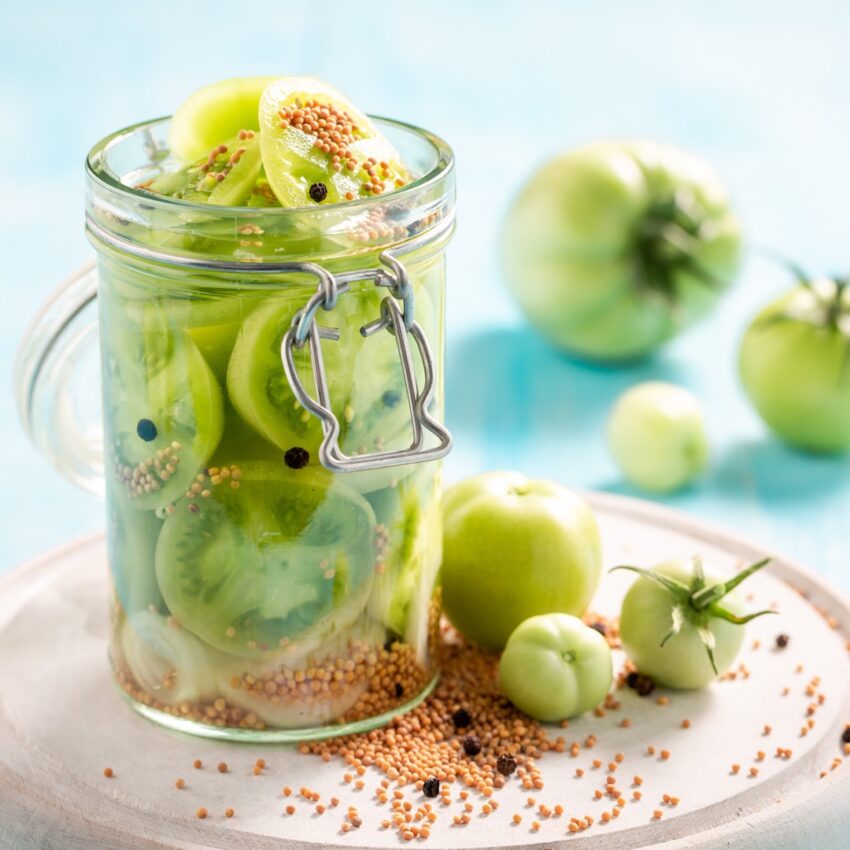
Pickled red onions are a must-have if you’re making Mexican fish tacos.

You can even pickle excess eggs with my pickled beet eggs recipe! It also works for cucumbers, (hot) peppers, radishes, carrots, cabbage… even pickled cauliflower is surprisingly delicious.
To make a quick pickle, all you need is a clean jar, your veggies of choice and your pickling brine, which will consist of water, sugar, vinegar and your spices of choice.
Just pop the veggies into the jar, pour the liquid on top and then place in the refrigerator for at least 24 hours to let the flavors mingle. Despite not having been boiled, the jars of pickled veg will last for up to a month in the fridge.
4. Canning
As mentioned above, quick pickles are a great option to preserve your harvest, but unfortunately they don’t last through winter even if you keep them in the fridge. If you really want to make sure you’ll be able to enjoy homegrown veg and fruit whenever, canning is the way to go.
This is because you’ll be boiling the can with the liquid and produce inside (referred to as a water bath), which seals the jar lid and ensures no outside funkiness like mold and other spores can get in.
It’s important to remember that when canning, you need to follow the exact instructions from a reputable resource (like extension service or Ball canning) to avoid any possibility of food poisoning. You’ll also need some specific equipment like sealable jars and canning pots, although this should be relatively affordable if you buy them used!
Once you get into canning you can opt for canning a sauce, jam, jelly or spread and then can that for future use or to give away. That way, instead of something like a homemade jelly having to be finished within a few weeks, you can store it for months and open it whenever you need it.
One of my favorite preserves to give as gifts are preserved cherries, sometimes with brandy and sometimes just alone. They are such a nice treat to have as a topping for waffles, pancakes or ice cream.
A few other favorite homemade recipes that can be canned in order to store them for longer include:
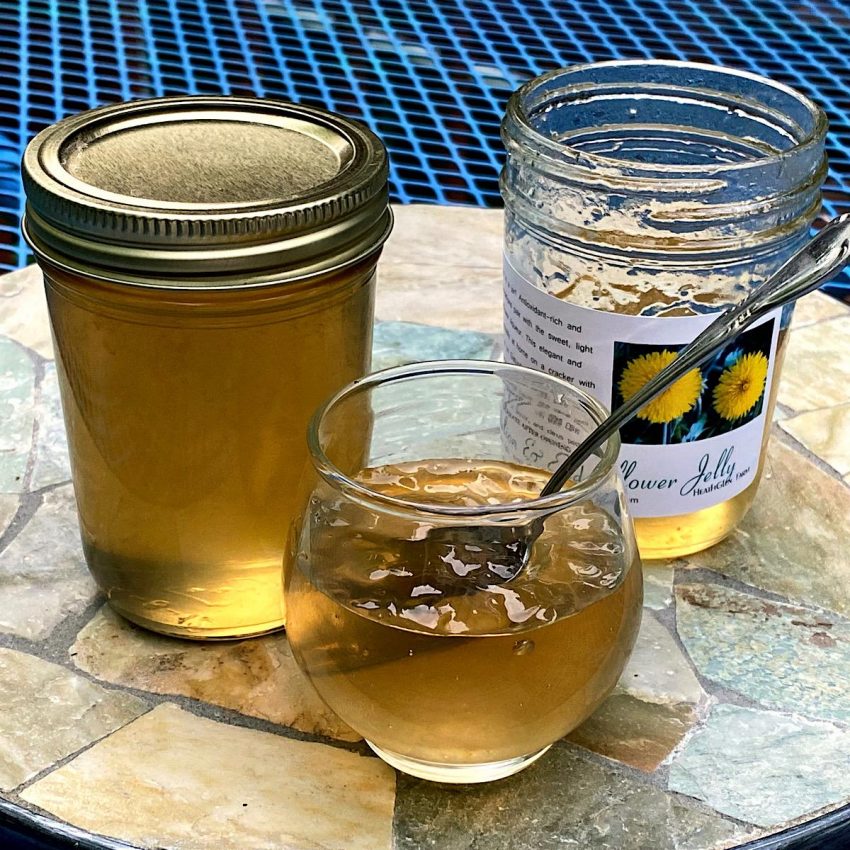
5. Preserving in salt
One of the oldest methods of preserving food is to do so using salt. The thing with salt is that it draws moisture from its surroundings, meaning it dries the food in question and makes it inhospitable to bacteria.
This is also one of the reasons we add plenty of salt to the quick pickles and canned goods discussed above. Salt preservation is a good option to make some of your harvest last throughout the winter, especially considering salt is very cheap.
Meat is commonly salted (think salmon, cured Spanish ham, dried and salted cod, beef jerky), but there’s no reason you can’t use this technique for other things!
Salt-preserved lemons are a classic North African ingredient, salt-cured hot peppers are delish and one of my favorite ways to preserve herbs is actually to make herbal salts. You can even add chiles or garlic to these fancy salt mixes to give them a little extra kick.
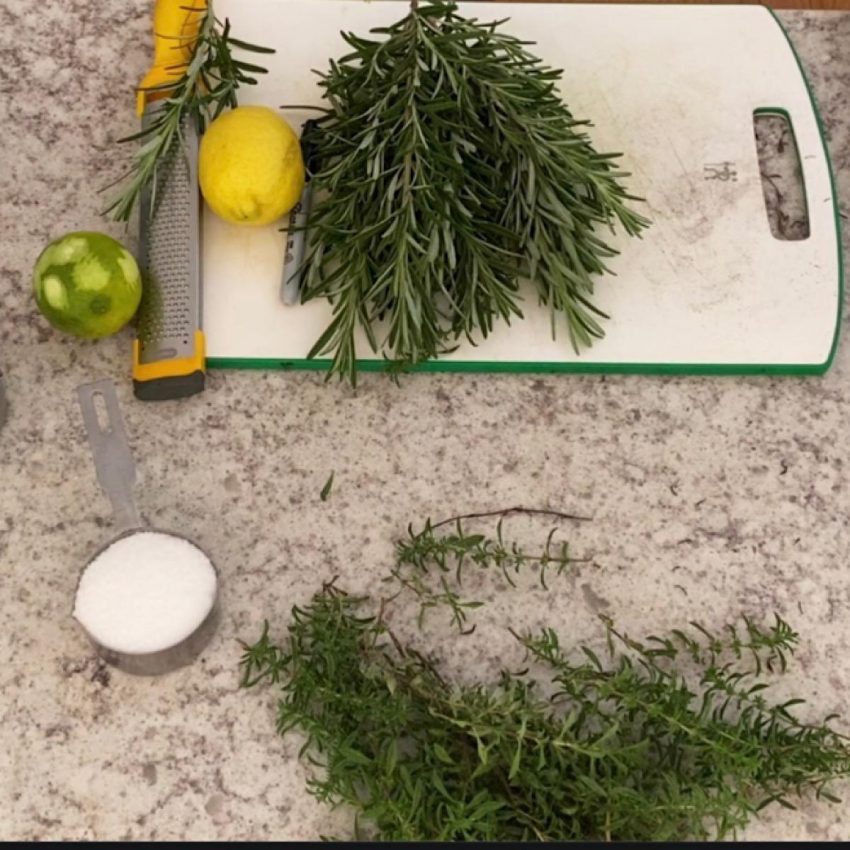
6. Cool storage (root cellar)
Some (root) vegetables, as well as fruits like apples, can last for ages when stored properly. But what does properly storing them actually mean?
Well, one of the best and historically tried-and-tested methods is cold storage, like in a root cellar. This is an underground storage space traditionally used to store the harvest during winter.
Temperatures inside the cellar are low and the humidity is high, making it a sort of all-natural fridge, but one that doesn’t take up space inside the home!
Some “regular” basements can be used as a root cellar, especially in older homes. Unfortunately, modern and well-isolated ones don’t work quite as well for this purpose.
If you’re really into homesteading or prepping and own a bit of land, you could actually consider digging your own root cellar. The space will also work well to store your canned goods, ensuring they keep even longer due to the low temps and don’t clutter the rest of your home.
Here are some fruits and vegetables that will do well in your root cellar:
- Potatoes
- Onions & garlic
- Carrots & parsnips
- Turnips & beets
- Apples & pears
7. Making shrub syrups
Here’s an option that works best with fruit! If you’re tired of dehydrating or canning your fruit and berry harvests, why not make a delicious shrub syrup to use in homemade sodas and cocktails?
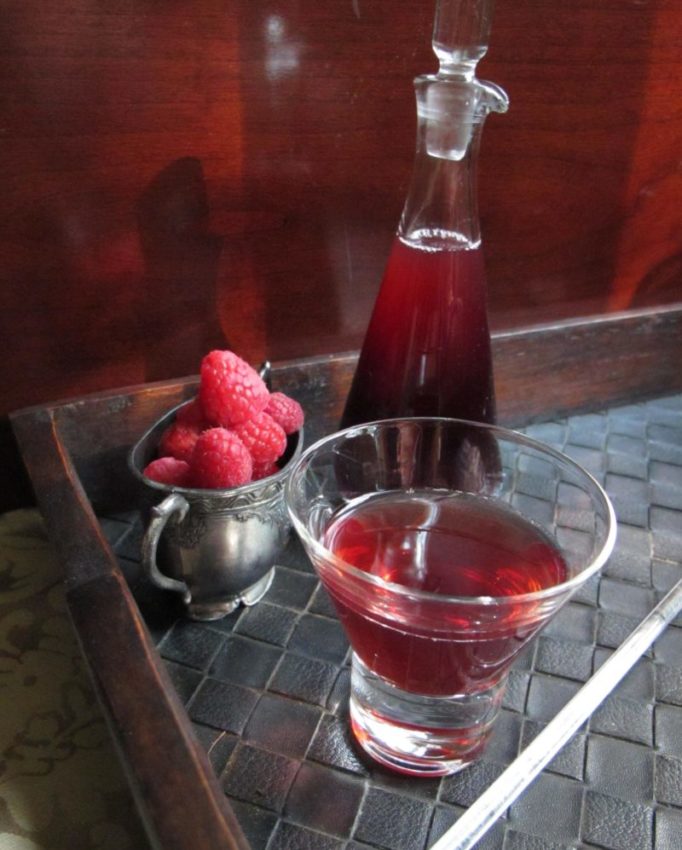
Because shrub syrups contain apple cider vinegar, they’re tangy and refreshing. They also last much longer than a simple syrup (up to a year in the fridge) because they benefit from the preserving powers of both sugar and vinegar.
There are a few different ways to make shrub syrup, and luckily, all of them are pretty easy. Have a look at my full guide to DIY shrub syrups and get experimenting!
Add herbs, flowers and other aromatics to achieve different flavors, or even toss in a chile pepper or two for a spicy kick. You can make a different syrup for every time of the year.
8. Fermenting
If you’re not familiar with the concept of fermenting veggies for future use, the whole concept can sound a little strange (or even risky!). But don’t forget: that sauerkraut you love on your hotdog and the kimchi in your ramen noodles were also fermented.
The same goes for many hot sauces, salsas and kombucha tea. In fact, there are many different foods that can be taken to a whole new level by means of fermenting, so don’t write it off as a method for preserving your harvest.
To ferment your veggies, you can either use a starter culture or simply let existing bacteria do their work. These helpful microscopic critters are called lactobacillus and their main job is to convert sugar into lactic acid, hence their name.
My husband got this fermenting kit for Christmas and it’s a great way to get started if you’re a beginner.
This is what gives fermented food that tangy flavor we love in our salads and other dishes. End of the season green tomatoes make a wonderful fermented kimchi.
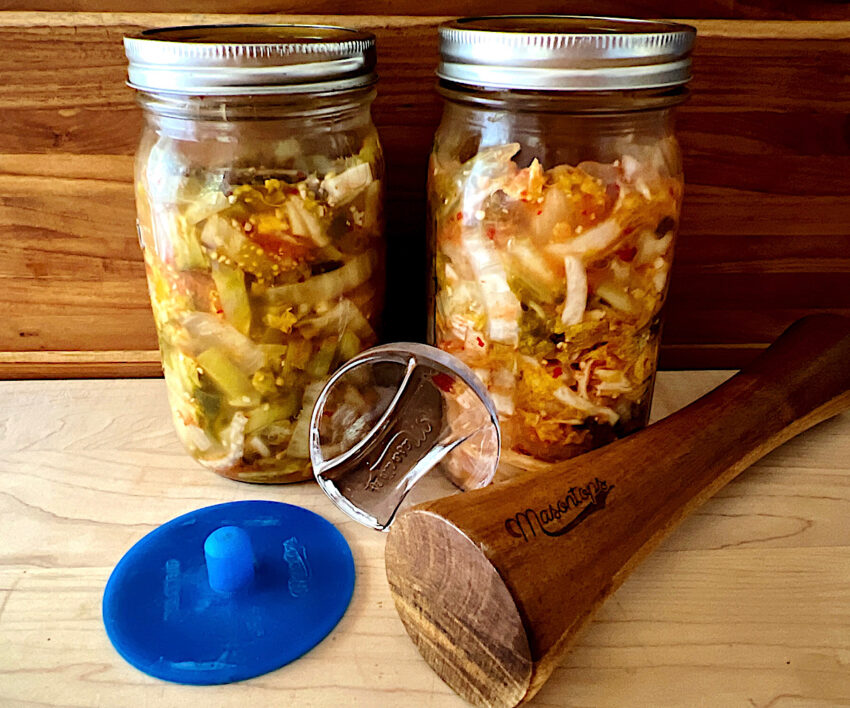
Luckily, it’s not difficult to coax some lactobacillus activity out of your vegetables. In fact, you just follow the basic steps described in the section on pickling, but skip the vinegar. There’s no need for it because all the flavor will come from the lactic acid.
You’ll also skip the step of placing the jar in the fridge right away, instead leaving it in a warm and sunny spot for a few days first.
9. Air Drying/hanging tomatoes, herbs or peppers
Ever heard of a ristra? As discussed in the post on extending the tomato harvest season, one classic method to preserve certain vegetables is to hang them in bunches to air dry. I’m sure you’ve seen classic bunches of hot pepper ristras in Mexican restaurants, but this method also works like a charm for herbs, garlic, onions and even certain breeds of tomatoes!
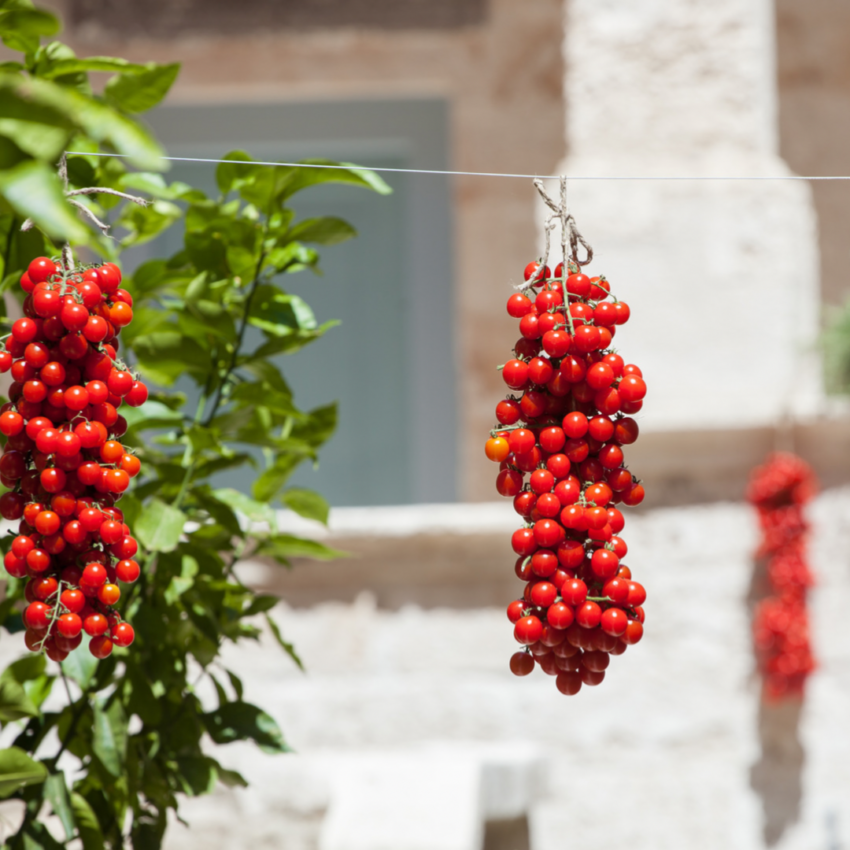
Making a ristra is very simple, as you literally only have to use a thick needle to thread some string through the veggie stems.
The preservation process and how long your ristra will last depend on the type of vegetable you’re using, but remember that good airflow is key.
Here are a few popular options:
- Tomatoes: Hang the ristra in a spot indoors that’s not too humid, doesn’t get direct sun and isn’t too hot. They can last for up to 60 days!
- Chiles: Hang the ristra outside in the sun for a few weeks and then bring it inside to use in your favorite recipes. It makes for beautiful kitchen décor in and of itself, and can last for months.
- Garlic: Instead of string, the dried up garlic leaves themselves are usually used to braid garlic ristras. As with chiles, garlic ristras can last for months.
- Herbs: Not the most popular option for a classic ristra, but bunches of herbs will dry and last for ages if you hang them upside down in a well-ventilated spot.
- Onion: These are also commonly braided. The increased air flow (as compared to your pantry) means they can also last for multiple months.
10. Preserve Herbs with Compound butters
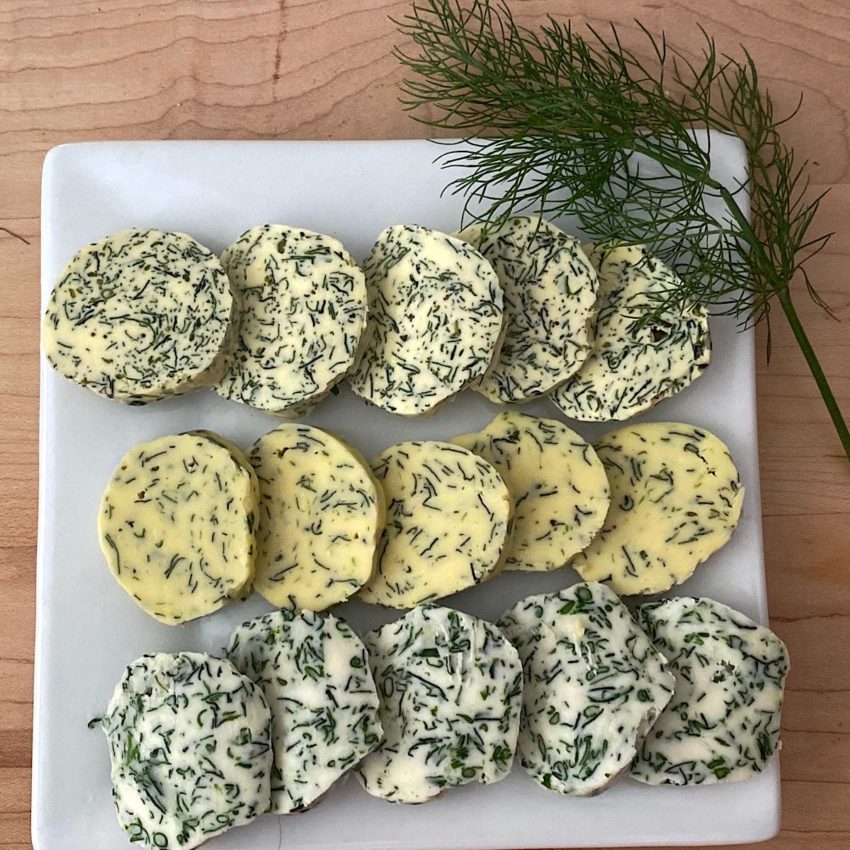
Know that feeling when winter is about to set in and you suddenly need to use ALL of the herbs in your herb garden? After all, many herbs are either annuals or mostly die off during the cold months, meaning you have to harvest them while you can. But… then what do you do?
We’ve discussed hanging herbs to store them, and you can also easily dehydrate them. Unfortunately, though, dried herbs just aren’t quite as nice in terms of flavor as fresh, which pretty much only leaves freezing as an option.
Or does it? If you love a good slab of herb butter on your toast or steak, you may just have found your new favorite way to preserve fresh herbs.
Making your own herbal compound butter is seriously easy: you just harvest whatever you’ve got, chop it up, add butter and mix it all up. You can even add extras like garlic, chile peppers, horse radish and other extras.
It tastes fantastic, and the best part is that compound butters are perfect candidates for freezing. I like to roll them into a log and wrap in wax paper so I can slice them as ”coins”. Freezing them in ice cube trays is easier of course, but not as elegant when you pull out a few coins for your steak or pork chop.
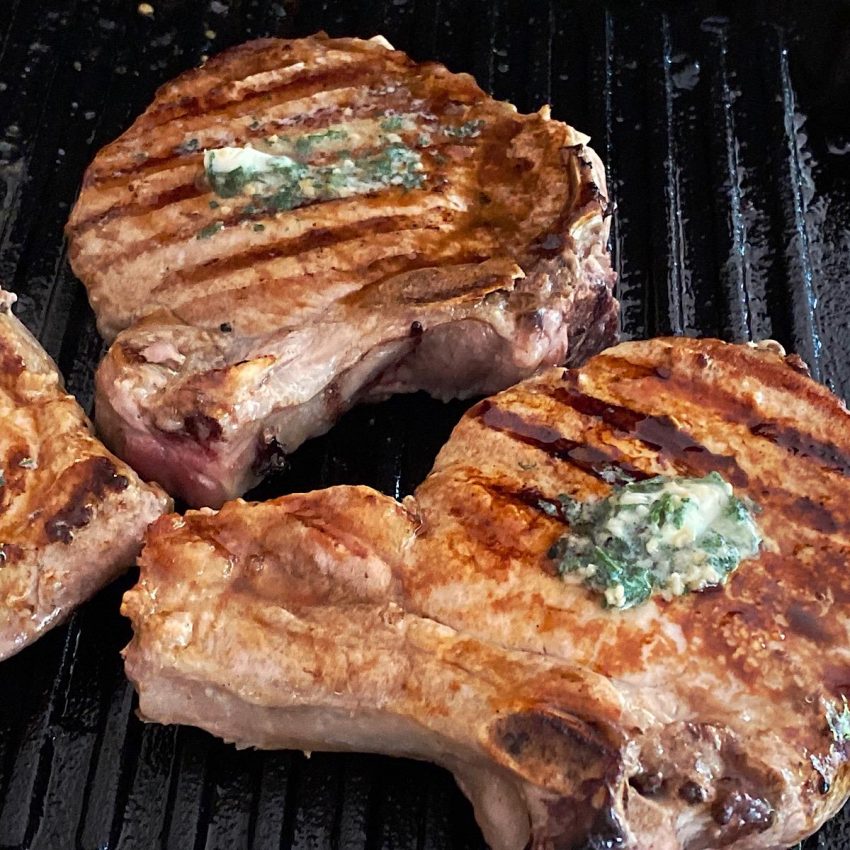
If you like my articles about cooking and gardening, subscribe to my weekly newsletter, where I share free recipes and gardening tutorials.

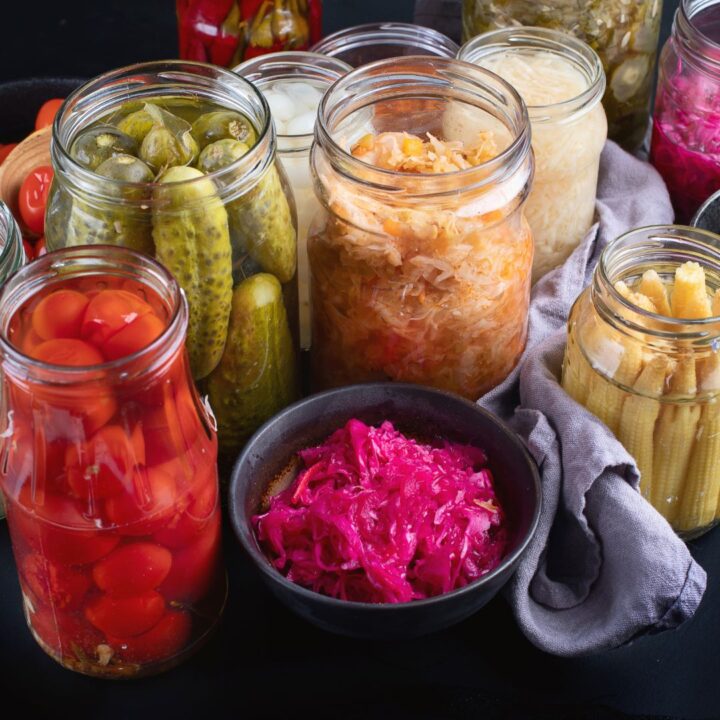

Leave a comment